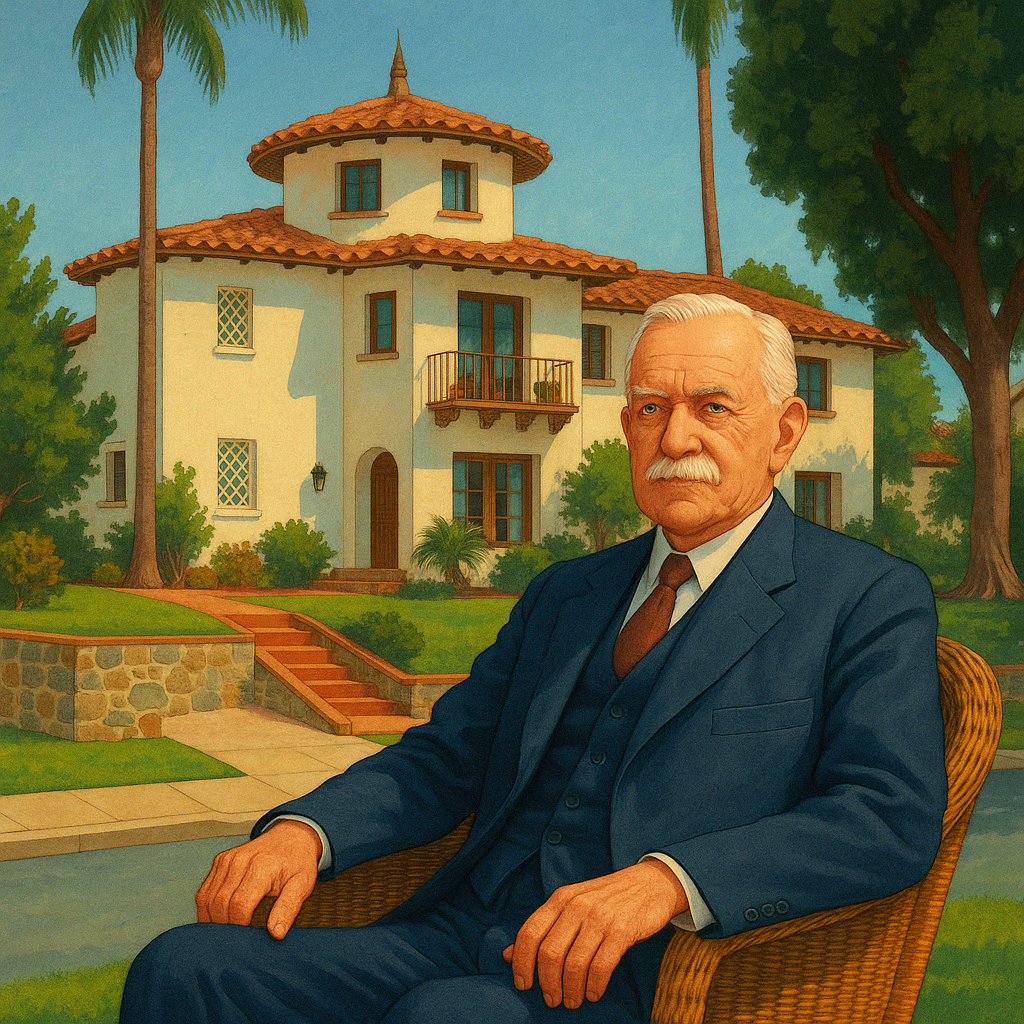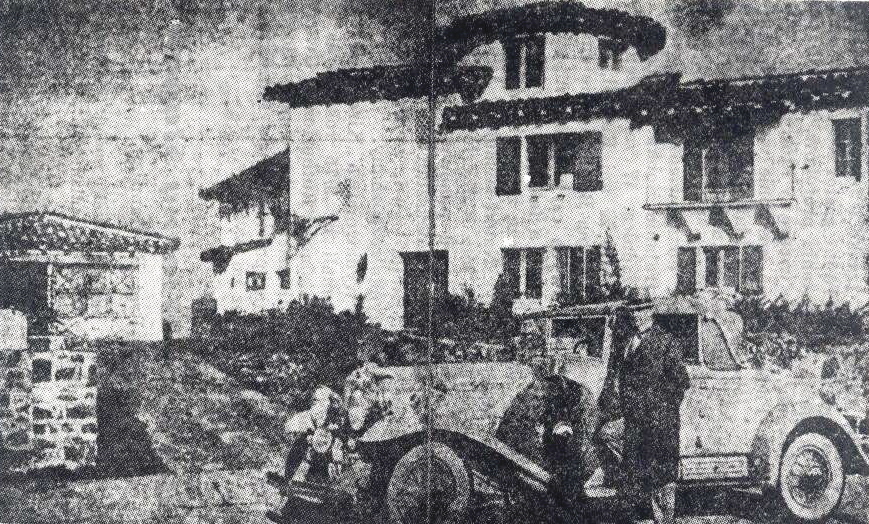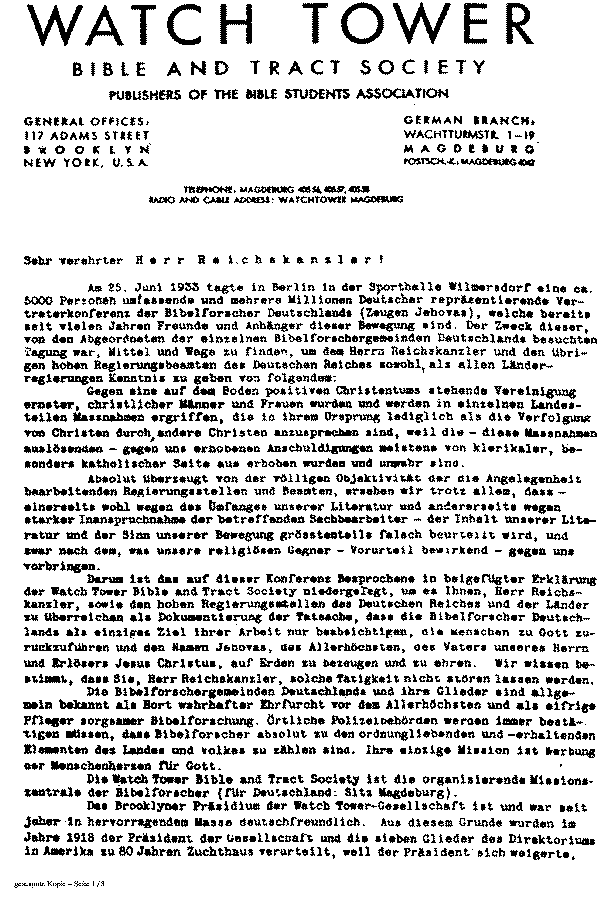
After the death of Charles Taze Russell in 1916, the leadership of the Watch Tower Bible and Tract Society fell into contention. Joseph Franklin Rutherford, an ambitious lawyer who had served briefly as Russell’s legal advisor, seized control of the organization through a series of controversial maneuvers. In early 1917, Rutherford published The Finished Mystery, presenting it as the posthumous “seventh volume” of Russell’s works. When four of the seven Watch Tower board members challenged his authority, Rutherford dismissed them on legal technicalities and replaced them with loyal supporters, prompting accusations of authoritarianism and betrayal of Russell’s vision. This power struggle fractured the movement, leading to the creation of various splinter groups such as the Pastoral Bible Institute (1918), the Laymen’s Home Missionary Movement (founded by Paul S. L. Johnson), and later, the Dawn Bible Students Association (1932) (Chryssides 2016, 44–47).
In 1918, Rutherford and several Watch Tower executives were arrested under the Espionage Act for the publication of The Finished Mystery, which criticized U.S. military efforts and other political authorities. They were sentenced to long prison terms, but after nearly a year in the Atlanta Federal Penitentiary, their convictions were overturned and they were released in 1919 (Zydek 2000, 165–170). Upon release, Rutherford began reshaping the organization, initiating sweeping doctrinal changes and consolidating authority within the Society’s headquarters. He discontinued the use of traditional Christian symbols like the cross, rejected holidays such as Christmas, and insisted that true Christians should separate themselves entirely from worldly governments and institutions. He famously launched the 1918 campaign, “Millions Now Living Will Never Die,” proclaiming that ancient biblical patriarchs like Abraham would return to life in 1925—a prophecy that ultimately failed (Penton 1997, 63–67).
Rutherford continued to centralize the group’s structure, replacing the formerly democratic system of elder-led congregations with a top-down arrangement led by appointed service directors. In 1931, he gave the movement its new name: Jehovah’s Witnesses, in part to distinguish it from other Bible Student offshoots that still followed Russell’s teachings (Chryssides 2016, 48). He also modernized their evangelistic efforts through the use of phonographs, film, and a powerful radio network to spread their message. Among his most controversial actions was the construction of Beth Sarim (“House of the Princes”) in San Diego in 1929, intended as a residence for resurrected ancient prophets. In practice, Rutherford used it as his winter retreat until his death, which drew public ridicule and internal dissent (Penton 1997, 83–85).
Despite repeated prophetic failures and criticism of his dictatorial leadership style, Rutherford expanded the reach and discipline of the movement. When he died in 1942, the organization had grown dramatically—from roughly 5,000 congregations at the time of Russell’s death to more than 113,000 active members worldwide. His successor, Nathan H. Knorr, would carry forward the global expansion, but Rutherford’s authoritarian restructuring permanently defined the core identity and governance of Jehovah’s Witnesses (Zydek 2000, 192–195).
The Rutherford Era: Authoritarian Shift and Expansion (1917–1942)
🔹 Seizing Control
- After C.T. Russell’s death in 1916, Joseph F. Rutherford became president of the Watch Tower Society in 1917.
- Published The Finished Mystery, which he claimed was the “Seventh Volume” of Russell’s writings.
- Four of the seven board directors objected to his authority, but Rutherford expelled them, asserting legal control of the board (Proclaimers, 67–68).
- This split the movement and led to the creation of splinter groups such as:
- The Pastoral Bible Institute (1918)
- Laymen’s Home Missionary Movement (by Paul S. L. Johnson)
- Dawn Bible Students Association (1932)
- Free Bible Students Association
Legal Troubles and Imprisonment
- In 1918, Rutherford and seven others were arrested under the U.S. Espionage Act for anti-war statements in The Finished Mystery.
- They were sentenced to 20 years in prison but released in 1919 after their convictions were overturned (Proclaimers, 71).
- The Watch Tower later portrayed the arrests as religious persecution.
🔹 Doctrinal Overhaul and Authoritarianism
- Rutherford rejected many of Russell’s teachings, declaring them outdated or mistaken.
- Introduced:
- “Millions Now Living Will Never Die” campaign (1918), claiming the resurrection of ancient faithfuls would begin in 1925 (J. F. Rutherford, Millions Now Living Will Never Die, 1920).
- Prohibition of Christmas, birthdays, saluting the flag, and use of the cross.
- Centralized leadership by replacing elected elders with appointed service directors (Proclaimers, 229).
- In 1931, the group adopted the name Jehovah’s Witnesses to distinguish themselves from other Bible Students (Proclaimers, 150).
🔹 Media and Property Expansion
- Rutherford leveraged media like radio, sound cars, and phonographs to preach worldwide (Proclaimers, 582–585).
- Built Beth Sarim in San Diego in 1929, claiming it would house resurrected princes (Watchtower, March 15, 1930, p. 87).
- He personally lived in Beth Sarim until his death in 1942.

🔹 Contact with Hitler and Nazis
- The Declaration of Facts (June 25, 1933) was delivered at a convention in Berlin and then sent to Nazi officials. It criticized the U.S. and Britain, and even suggested some ideological alignment with certain “high ideals” of the German government.
- The document attempted to show that Jehovah’s Witnesses were not aligned with Jews or communists, which many have criticized as a form of appeasement.
- Scholars and former members have debated whether this was a cowardly compromise or a misguided attempt at protecting German Witnesses from persecution.
- Shortly after, persecution of Jehovah’s Witnesses in Nazi Germany intensified, including imprisonments and executions.

🔹 More Prophetic Failures
- Rutherford repeatedly predicted Armageddon:
- 1918: God’s judgment begins
- 1925: Ancient worthies return
- 1941: Claimed that young Witnesses might not marry before Armageddon (Watchtower, September 15, 1941, p. 288).
- These failed predictions caused internal doubt and public ridicule, though they were later reframed as “adjustments.”
- The Declaration of Facts (June 25, 1933) was delivered at a convention in Berlin and then sent to Nazi officials. It criticized the U.S. and Britain, and even suggested some ideological alignment with certain “high ideals” of the German government.
- The document attempted to show that Jehovah’s Witnesses were not aligned with Jews or communists, which many have criticized as a form of appeasement.
- Scholars and former members have debated whether this was a cowardly compromise or a misguided attempt at protecting German Witnesses from persecution.
- Shortly after, persecution of Jehovah’s Witnesses in Nazi Germany intensified, including imprisonments and executions.
Sources:
🔹 Final Years and Legacy
- By Rutherford’s death in 1942, the movement had grown from a few thousand in 1917 to over 113,000 publishers worldwide.
- Despite controversy, Rutherford’s rule established the centralized, authoritarian model that still defines Jehovah’s Witnesses today.
After Rutherford’s death, the organization went on with his structure and doctrines. We see the start of employing their own bible. Read more on the next page.
[ Next Page – History of the New World Translation ]
References:
- Chryssides, George D. Historical Dictionary of Jehovah’s Witnesses. Lanham: Rowman & Littlefield, 2016.
- Penton, M. James. Apocalypse Delayed: The Story of Jehovah’s Witnesses. 2nd ed. Toronto: University of Toronto Press, 1997.
- Zydek, Peter. Jehovah’s Witnesses: Proclaimers of Apocalypse. Hollywood: Insight Books, 2000.
- Watch Tower Bible and Tract Society. Jehovah’s Witnesses—Proclaimers of God’s Kingdom. Brooklyn, NY: Watch Tower Bible and Tract Society, 1993.
- Rutherford, J. F. Millions Now Living Will Never Die. Brooklyn, NY: International Bible Students Association, 1920.
- The Watchtower, March 15, 1930, p. 87.
- The Watchtower, September 15, 1941, p. 288.
🔖 In-Text Citations Grouped
🔹 Chryssides (2016)
- Chryssides (2016), pp. 44–47.
- Chryssides (2016), pp. 51–52.
🔹 Penton (1997)
- Penton (1997), pp. 63–67.
- Penton (1997), pp. 83–85.
🔹 Zydek (2000)
- Zydek (2000), pp. 165–170.
- Zydek (2000), pp. 192–195.
🔹 Proclaimers (1993)
- Proclaimers, pp. 67–69.
- Proclaimers, pp. 70–72.
- Proclaimers, pp. 137, 150, 229.
- Proclaimers, pp. 578–579.
- Proclaimers, p. 425.
🔹 Other
- Rutherford, Millions Now Living Will Never Die (1920).
- The Watchtower, March 15, 1930, p. 87.
- The Watchtower, Sept. 15, 1941, p. 288.
- Jehovah’s Witnesses—Proclaimers of God’s Kingdom, 1993, pp. 693–695.
- Penton, M. James. Apocalypse Delayed, 1997, pp. 173–176.
- United States Holocaust Memorial Museum. “Jehovah’s Witnesses in Germany.”
